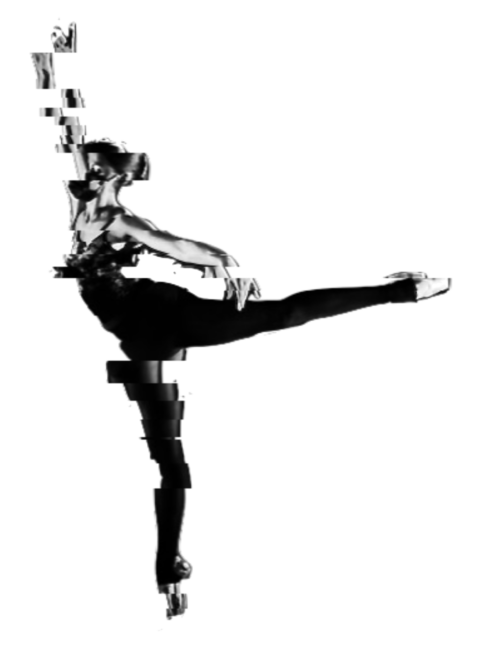It’s not your typical Thursday at the Harvard Dance Center. Audience members swarm the double-doors, grateful for any respite from the chilly November night, and they are more than delighted to witness the first in-person performance of the Harvard Ballet Company in over a year. Jackets are shed, seats taken, and phones turned off. All eyes are focused on the stage ahead.
As the music swells, an iPhone screen lights up, not in the audience but on the stage. A dancer scrolls furiously through her phone, while the screen above her streams a feed of almost-too-perfect Instagram posts—airbrushed snapshots of pink tulle and slicked-back ballerina buns. Thus begins Act One, “Identities.” It explores the relationship between technology and identity, making use of actual cell phones and pre-recorded segments to portray how people can find themselves lost, stumbling across the stage due to social-media-induced malaise.
Act Two, “Interconnections,” investigates how technology is deeply integrated within our own lives. Dances in this act innovatively use lights, both through colored backgrounds and box lighter that emulate phone screens. Act Three, “Innovations,” pushes the boundaries of ballet to explore what room there is for the art to evolve. Here, the robot finally emerged, a virtual dance between Harvard alumni Dr. Merritt Moore and her robotic arm Baryshnibot (nicknamed Botman and Robin), as well as a virtual day-in-the-life and a concluding company moment that highlighted the dancers of the night.
Technique is not solely a performance. It is a social commentary on the effects of technology and social media on the individual and society as a whole. The show is peppered with special effects (notably, a robot) which, paired with the technical ability and emotion of the dancers, offer a balanced take on the pros and cons of life in the technological age.
Technique is not solely a performance. It is a social commentary on the effects of technology and social media on the individual and society as a whole.
While the performers were incredible throughout the show, there were times when the choreography of Technique was too on-the-nose. After the third appearance of the cell phone in a dance, the exploration into social media seemed to have been exhausted. It was wonderful to see dancers from different campuses being highlighted in a virtual setting, but their appearances could have been emphasized by a stronger interaction with the physical dancers—something done exceptionally well in the parting wave of the dance “…skipped that step” between these two realms of performers on the stage.
What stood out most from the night were the acts that explored social media with nuance and creativity. The dance “and when we come face to face” featured the dancers on pointe, paired together with slow, lucid movements that evoked the intimacy of being, namely, “face to face.” Meanwhile, “sugar plum fAIry” was a progressive modern dance juxtaposing a pair of ballet and break dancers as they weaved back and forth in competing pas de deux; and “Diablo Rojo” was one of the largest pieces that invigorated its audience through a latin dance, with performers whirling back-and-forth across the stage. In its best moments, Technique captured the nuance of how different feelings—intimacy, passion, dread, excitement—interact as we all return back from the virtual world of COVID.
At the end of the night, this performance was most significant for its dancers. Sophie O’Melia ’25 described dancing as if she was “floating,” as it is “a way to express myself without actually saying words.” She dances for those moments where “you can hear a pin drop and it all feels fake, but in the best way.”
Another performer from the show, Sophia Barakett ’25, describes ballet as an “art form that asks a lot of you, even if it doesn’t love you back all the time.” After facing the disruptions of COVID-19 on her ballet training, she now can fully enjoy the art of in-person performance. “For a full year during COVID, I was training in my little apartment with my roommate because we had to do classes on Zoom, which was terrible,” Barakett says. “When you’re doing that every day for a year, with almost no light at the end of the tunnel, to finally have that reward of performing is really exciting.” For these dancers who have devoted hours upon hours of their lives perfecting their craft, there is something incredibly beautiful about seeing them all return back to the stage again.
Calvin Osborne ’25 (cosborne@college.harvard.edu) is only flexible when he needs to be.

